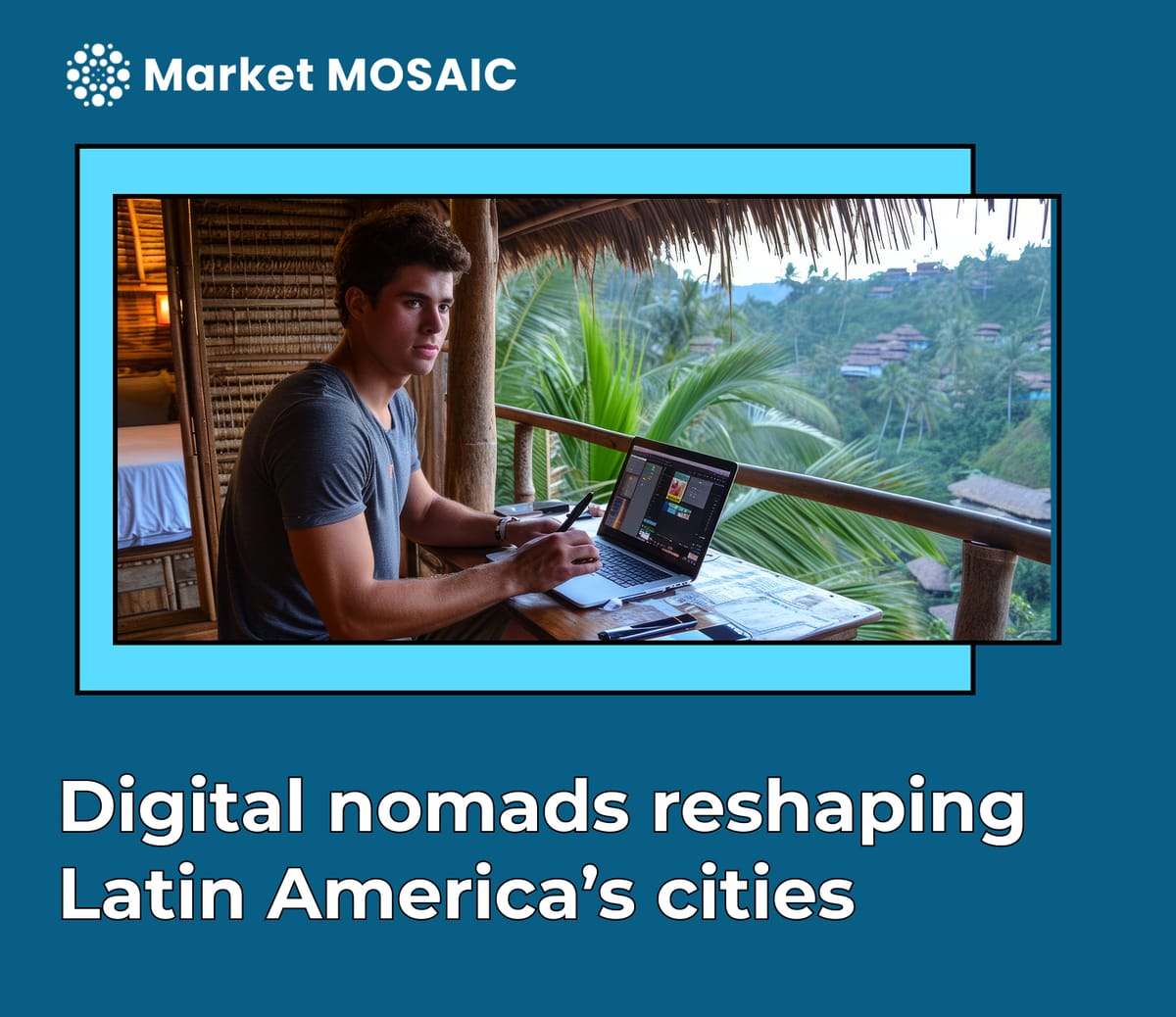Digital nomads reshaping Latin America’s cities

A new consumer class on the rise
Digital nomads are remote workers who leverage technology to work from anywhere while often earning in stronger foreign currencies like the dollar or euro. They are transforming Latin America’s cities. Since they often earn in strong foreign currencies, are spending well above local incomes, creating new demand for housing, hospitality, and urban services. Rwazi data shows digital nomads spend an average of $1,847 per month in the region, nearly double what many locals earn. In Mexico City, the region’s leading hub, spending rises to $1,971 per month, flowing into cafés, coworking hubs, and short-term rentals that now dominate once-local neighborhoods.
The double-edged impact on local economies
For small businesses and entrepreneurs, nomads have brought undeniable opportunity. Coworking spaces are thriving, while artisanal cafés and boutique gyms now see steady international clientele. Yet this boom has a price. Mexico City, ranked the most expensive city in Latin America by the Economist Intelligence Unit, now sees one-bedroom rents averaging $1,300 in Roma and Condesa, far out of reach for locals who earn closer to $300 per month. In Medellín’s El Poblado, monthly rents of $700 to $1,200 are displacing long-time residents from once-affordable neighborhoods.
Beyond connectivity: what really attracts nomads
It turns out fast internet isn’t the main draw for digital nomads. In Cuenca, Ecuador, where speeds average 19 Mbps and monthly spending is $1,332, nomads report higher satisfaction than in São Paulo, despite its 60+ Mbps connections and higher costs. Medellín and Buenos Aires attract thousands with their climate, affordability, and rich cultural life. For most nomads, lifestyle and community matter more than pure connectivity.
When growth fuels tensions
The foreign-driven boom has also stirred resentment.In Mexico City, residents have protested rising rents fueled by foreign-driven demand, as short-term rental platforms like Airbnb make housing increasingly scarce for locals. Medellín faces its own cultural friction, as restaurants and shops pivot toward foreign tastes, leaving locals feeling sidelined in their own neighborhoods. Without thoughtful policy, the very communities that make these cities attractive risk being hollowed out.
Governments are beginning to take notice. Mexico City’s mayor introduced short-term rental regulations in 2023 to slow housing displacement. Colombia launched a digital nomad visa in the same year, targeting 45,000 remote workers by mid-2024 while linking entry to tax and business contributions.
The path forward: blending opportunity with inclusion
The digital nomad economy has the potential to inject millions into local markets while boosting global visibility for Latin American cities. But without safeguards, it risks deepening inequality and eroding cultural identity. The cities that will thrive are those that welcome foreign workers while protecting locals, through regulated rental markets, community-focused coworking spaces, and inclusive policies that reinvest nomad dollars back into housing and infrastructure.





